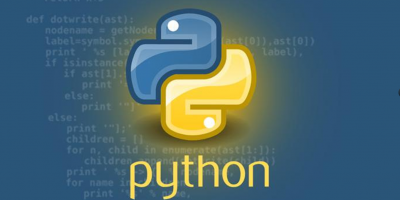Python之time模块详解
python3中time模块的用法及说明
python中,导入time模块使用的命令是
importtime
可以使用以下命令查看time模块内置的能够使用的方法:
dir(time)
可以使用以下命令查看time模块中每个内置方法的说明:
help(time.time_method)
比如time模块下有一个time.time的方法,现在我想查看这个方法的官方文档,就可以使用这样的命令:
help(time.time)
时间的表示形式:
在python中,通常有三种方式来表示时间:时间戳,元组(结构化时间,struct_time),格式化的时间字符串。
(1)时间戳(timestamp):通常来说,时间戳表示从1970年1月1日00:00:00开始按秒计算的偏移量,它的值是float类型
(2)格式化的时间字符串(Format String):‘2017-06-20’
(3)结构化时间(struct_time):struct_time元组共有9个元素:(年,月,日,时,分,秒,一年中的第几周,一年中的第几天等)
time模块中内置的常用的方法:
asctime
接受时间元组并返回一个可读的形式"Tue May 30 17:17:30 2017"(2017年5月30日周二17时17分30秒)的24个字符的字符串
Convertatimetupletoastring,e.g.'SatJun0616:26:111998'. Whenthetimetupleisnotpresent,currenttimeasreturnedbylocaltime() isused. >>>time.asctime() 'ThuJun2219:27:192017'
ctime
作用相当于asctime(localtime(secs)),未给参数相当于asctime()
ctime(seconds)->string ConvertatimeinsecondssincetheEpochtoastringinlocaltime. Thisisequivalenttoasctime(localtime(seconds)).Whenthetimetupleis notpresent,currenttimeasreturnedbylocaltime()isused. >>>time.ctime() 'ThuJun2219:34:352017'
gmtime
接收时间辍(1970纪元年后经过的浮点秒数)并返回格林威治天文时间下的时间元组t(t.tm_isdst始终为0)
gmtime([seconds])->(tm_year,tm_mon,tm_mday,tm_hour,tm_min, tm_sec,tm_wday,tm_yday,tm_isdst) ConvertsecondssincetheEpochtoatimetupleexpressingUTC(a.k.a. GMT).When'seconds'isnotpassedin,convertthecurrenttimeinstead. Iftheplatformsupportsthetm_gmtoffandtm_zone,theyareavailableas attributesonly. >>>time.gmtime() time.struct_time(tm_year=2017,tm_mon=6,tm_mday=22,tm_hour=11,tm_min=35,tm_sec=12,tm_wday=3, tm_yday=173,tm_isdst=0)
localtime
接收时间辍(1970纪元年后经过的浮点秒数)并返回当地时间下的时间元组t(t.tm_isdst可取为0或1,取决于当地当时是不是夏令时)
localtime([seconds])->(tm_year,tm_mon,tm_mday,tm_hour,tm_min, tm_sec,tm_wday,tm_yday,tm_isdst) ConvertsecondssincetheEpochtoatimetupleexpressinglocaltime. When'seconds'isnotpassedin,convertthecurrenttimeinstead. >>>time.localtime() time.struct_time(tm_year=2017,tm_mon=6,tm_mday=22,tm_hour=19,tm_min=35,tm_sec=35, tm_wday=3,tm_yday=173,tm_isdst=0)
mktime
接受时间元组并返回时间辍(1970纪元年后经过的浮点秒数)
mktime(tuple)->floatingpointnumber ConvertatimetupleinlocaltimetosecondssincetheEpoch. Notethatmktime(gmtime(0))willnotgenerallyreturnzeroformost timezones;insteadthereturnedvaluewilleitherbeequaltothat ofthetimezoneoraltzoneattributesonthetimemodule. >>>time.mktime(time.localtime()) 1498131370.0
sleep
推迟调用线程的运行,secs的单位是秒
Delayexecutionforagivennumberofseconds.Theargumentmaybe afloatingpointnumberforsubsecondprecision.
相关推荐:《Python视频教程》
strftime
把一个代表时间的元组或者struct_time(如由time.localtime()和time.gmtime()返回)转化为格式化的时间字符串.如果t未指定,将传入time.localtime(),如果元组中任命一个元素越界,将会抛出ValueError异常
strftime(format[,tuple])->string Convertatimetupletoastringaccordingtoaformatspecification. Seethelibraryreferencemanualforformattingcodes.Whenthetimetuple isnotpresent,currenttimeasreturnedbylocaltime()isused. Commonlyusedformatcodes: %YYearwithcenturyasadecimalnumber.===>完整的年份 %mMonthasadecimalnumber[01,12].===>月份(01-12) %dDayofthemonthasadecimalnumber[01,31].===>一个月中的第几天(01-31) %HHour(24-hourclock)asadecimalnumber[00,23].===>一天中的第几个小时(24小时制,00-23) %MMinuteasadecimalnumber[00,59].===>分钟数(00-59) %SSecondasadecimalnumber[00,61].===>秒(01-61) %zTimezoneoffsetfromUTC.===>用+HHMM或者-HHMM表示距离格林威治的时区偏移(H代表十进制的小时数,M代表十进制的分钟数) %aLocale'sabbreviatedweekdayname.===>本地(local)简化星期名称 %ALocale'sfullweekdayname.===>本地完整星期名称 %bLocale'sabbreviatedmonthname.===>本地简化月份名称 %BLocale'sfullmonthname.===>本地完整月份名称 %cLocale'sappropriatedateandtimerepresentation.===>本地相应的日期和时间表示 %IHour(12-hourclock)asadecimalnumber[01,12].===>一天中的第几个小时(12小时制,01-12) %pLocale'sequivalentofeitherAMorPM.===>本地am或者pm的相应符
>>>time.strftime("%Y-%m-%d")
'2017-06-22'
>>>time.strftime("%Y-%m-%d%H-%H-%S")
'2017-06-2219-19-28'
strptim
把一个格式化时间字符串转化为struct_time,实际上它和strftie()是逆操作
strptime(string,format)->struct_time
Parseastringtoatimetupleaccordingtoaformatspecification.
Seethelibraryreferencemanualforformattingcodes(sameas
strftime()).
>>>time.strptime("2017-06-21","%Y-%m-%d")
time.struct_time(tm_year=2017,tm_mon=6,tm_mday=21,tm_hour=0,tm_min=0,tm_sec=0,tm_wday=2,tm_yday=172,tm_isdst=-1)
>>>time.strptime("2017-06-2112-34-45","%Y-%m-%d%H-%M-%S")
time.struct_time(tm_year=2017,tm_mon=6,tm_mday=21,tm_hour=12,tm_min=34,tm_sec=45,tm_wday=2,tm_yday=172,tm_isdst=-1)
struct_time
把一个时间转换成结构化时间
Thetimevalueasreturnedbygmtime(),localtime(),andstrptime(),and acceptedbyasctime(),mktime()andstrftime().Maybeconsideredasa sequenceof9integers. >>>time.struct_time(time.localtime()) time.struct_time(tm_year=2017,tm_mon=6,tm_mday=22,tm_hour=19,tm_min=42,tm_sec=7, tm_wday=3,tm_yday=173,tm_isdst=0) time
返回当前时间的时间戳(1970元年后的浮点秒数
ReturnthecurrenttimeinsecondssincetheEpoch. Fractionsofasecondmaybepresentifthesystemclockprovidesthem. >>>time.time() 1498131760.7711384 >>>time.time() 1498131764.7621822
几种时间形式的转换
1.把时间戳转换成结构化时间,使用的是time.localtime或time.gmtime命令。
>>>t1=time.time() >>>print(t1) 1498132526.8227696 >>>t2=time.localtime(t1) >>>print(t2) time.struct_time(tm_year=2017,tm_mon=6,tm_mday=22,tm_hour=19,tm_min=55,tm_sec=26, tm_wday=3,tm_yday=173,tm_isdst=0)
2.把结构化时间转换成时间戳,使用time.mktime命令
>>>t3=time.struct_time(time.localtime()) >>>print(t3) time.struct_time(tm_year=2017,tm_mon=6,tm_mday=22,tm_hour=19,tm_min=58,tm_sec=29,tm_wday=3,tm_yday=173,tm_isdst=0) >>>t4=time.mktime(t3) >>>print(t4) 1498132709.0
3.把结构化时间转换成时间字符串,使用time.strftime命令
>>>t1=time.localtime()
>>>print(t1)
time.struct_time(tm_year=2017,tm_mon=6,tm_mday=22,tm_hour=20,tm_min=0,tm_sec=37,tm_wday=3,
tm_yday=173,tm_isdst=0)
>>>t2=time.strftime("%Y-%m-%d",t1)
>>>print(t2)
2017-06-22
4.把字符串时间转换成结构化时间,使用的是time.strptime命令
>>>t1="2017-05-2008:08:10" >>>print(t1) 2017-05-2008:08:10 >>>t2=time.strptime(t1,"%Y-%m-%d%H:%M:%S") >>>print(t2) time.struct_time(tm_year=2017,tm_mon=5,tm_mday=20,tm_hour=8,tm_min=8,tm_sec=10, tm_wday=5,tm_yday=140,tm_isdst=-1)
例子:
假如我有一个时间字符串,然后想得到这个时间之后3天的时间字符串,可以使用如下的命令:
importtime
time1="2017-05-20"
#把时间字符串转换为时间戳,然后加上3天时间的秒数
time2=time.mktime(time.strptime(time1,"%Y-%m-%d"))+3*24*3600
#把转换后的时间戳再转换成时间字符串
time3=time.strftime("%Y-%m-%d",time.localtime(time2))
print(time3)
上一篇
下一篇










